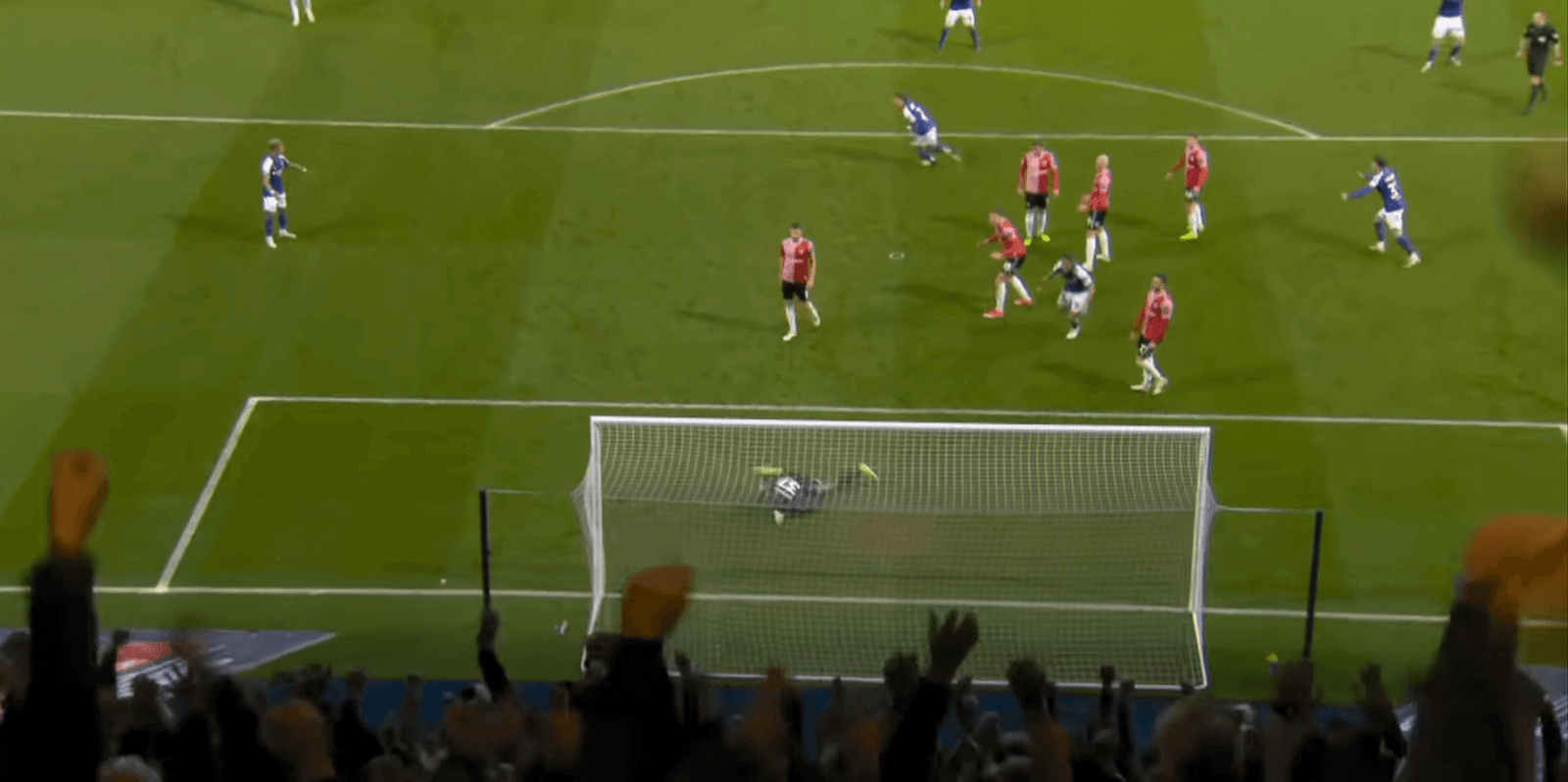Ipswich Town have spent the summer preparing for their first season back in the Premier League after a 22-year absence.
Kieran McKenna has been busy adding to his squad, turning Omari Hutchinson’s loan spell from Chelsea permanent in a deal worth an initial £20million ($25.6m), and also bringing in Liam Delap from Manchester City for £15m plus £5m in potential add-ons.
While new signings are what get supporters excited for a new campaign, Ipswich have been working behind the scenes to prepare for the Premier League in other ways.
One of the projects they undertook was repositioning all of their television camera stations by building a new gantry, meaning there would no longer be one at the top of the Sir Bobby Robson Stand.
The Athletic explains why Ipswich have changed their camera angles for the 2024-25 season…
What was noteworthy about their old camera angle?
As you can see below, the TV camera in the Sir Bobby Robson Stand was positioned at the top of the stand, resulting in supporters’ arms and heads being shot when the operator panned out.
So when Ipswich’s Jeremy Sarmiento scored a 97th-minute winner against Southampton in April, this is how it looked on TV when the director cut to the camera operator positioned at the top of the stand…

Even though it looks unique and captures the emotion supporters go through when a last-minute winner is scored, heads and arms obstructing the view for those watching from home could be considered detrimental to the broadcast.
Why have they changed it now?
The Premier League makes a series of recommendations to clubs when they are promoted from the Championship.
One of the things they expect clubs to do is enlarge their TV gantries to help cope with the added demand for camera positions.
Although this formed part of the league’s guidance to Ipswich, plans were already underway at the club to make changes.
As per the Premier League’s rules for 2024-25, the TV gantry needs to be at least 19 metres wide and two metres deep.
What other demands does the Premier League make?
This is not the only guidance given to promoted clubs as they adapt to life in the Premier League.
These changes can range from installing seats for at least three opposition analysts to the introduction of goal-line technology, as well as a press lounge for media members to work from before and after the game.
Section K of the Premier League’s handbook maps out what is expected of clubs and the regulations they need to adhere to when it comes to meeting stadium criteria and broadcasters’ requirements.
The Premier League, however, does accept it can be difficult for promoted sides to implement everything in time for the new season. Failing to meet every requirement will not necessarily result in a punishment and it is something the Premier League works on with clubs.
In some cases, clubs can write to the league and ask for special dispensation if a certain regulation cannot be met.
Have Ipswich made any other changes?
Aside from designing a new TV gantry to sit above the directors’ box, the club have also built a new press box.
England’s top flight attracts more viewers than the Championship — and there is much more media demand when it comes to applying for accreditation to attend matches.
And now Ipswich are in the Premier League, they will have to entertain broadcast crews of 60 staff, around 20 photographers working pitchside, as well as radio and TV commentators and the written media.
Read the full article here

